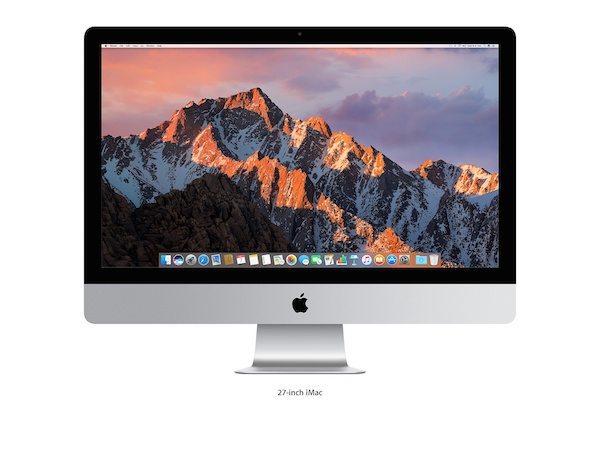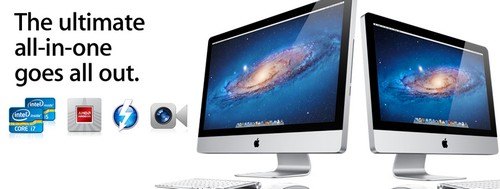The Marketing mix of Imac analyses the 4Ps of Imac, which includes the Product, Price, Place, and Promotion of Imac. iMac is a product range designed, owned, manufactured, and marketed by its owner, Apple Inc. It includes all-in-one desktop computers belonging to the Macintosh product family. iMac made its debut in 1998 and since then has become the topmost brand of its parent multinational technology company. Some of its competitors are.
- LG
- Lenovo
- Dell
About Imac
- Type: iMac is a family of all-in-one Macintosh computers
- Industry: Consumer electronics
- Founded: August 15, 1998
- Founders: Steve Jobs, Steve Wozniak, and Ronald Wayne
- Headquarters: Cupertino, California, United States
- Area served: Worldwide
- Current CEO: Tim Cook
- Number of employees: 154,000 (2022)
- Major products: iMac, MacBook, iPhone, iPad, Apple Watch, AirPods, HomePod, and Apple TV
Table of Contents
IMac Product Strategy
iMac is Apple’s leading consumer desktop brand, and the premium brand has evolved via seven distinctive formations. Its first version was the iMac G3, and it had a CRT monitor enclosed by a plastic case of translucent nature and egg-shaped look.
The second vital version was the iMac G4, released in January 2002. It had all the main components: a hemispherical base with LCD monitor, 40 GB – 160 GB, and PowerPC G4. The third critical revision occurred in 2004 with the iMac G5, followed by the Intel iMac in 2006.
A slim-unified design was created with all components placed behind the display. The fifth major version was released in 2007 and was thinner with anodized aluminum. A significant revision for the sixth time took place in 2012, and it used a new display unit with varied and distinctive production techniques. Vital features included a solid-state drive and dual-microphone setup. The seventh version was launched in 2014 and had a Retina 4K-Display, a new processor, new storage options, and a graphics chip.
The new Product Mix of iMac in 2023 is as follows (Source).
- Standard iMac: These are the entry-level models of the iMac range, usually featuring smaller screen sizes (like 21.5 inches in earlier models) and basic hardware configurations. They are designed for general users who need a reliable, high-quality computer for everyday tasks.
- iMac with Retina Display: These models come with high-resolution Retina displays (like 4K or 5K screens) and more powerful hardware than the standard iMac. They target users who require superior visual quality for graphic design, video editing, and professional photography tasks.
- iMac Pro: The iMac Pro is a high-end model designed for professional users who need exceptional processing power. This model typically includes more powerful processors, advanced graphics, and increased memory and storage options. It caters to professionals in demanding fields like video production, 3D rendering, and scientific computing.
- Accessories and Software: The iMac product mix includes accessories like the Magic Mouse, Magic Keyboard, and Magic Trackpad. Additionally, iMacs come with pre-installed software such as macOS and Apple’s productivity suite and creative applications.
- Service and Support: Apple provides a range of services and support options for iMac users, including AppleCare, which offers extended warranty and support plans.
Imac Place Strategy
iMac is an Apple product marketed through its 478 retail outlets across nearly seventeen countries. Apple stores are specially located at convenient places and are designed to suit and meet customer demands. Its outlets are in important places like New York, London, Paris, Sydney, India, Barcelona, Hong Kong and Japan.
Apple’s place strategy for the iMac is a critical component of its overall marketing and distribution plan, ensuring that this flagship desktop computer is accessible globally to a wide range of customers. Here’s an overview of the strategy:
- Apple Retail Stores: Apple showcases iMacs in its retail stores worldwide. These stores serve as sales points and provide a unique customer experience, allowing potential buyers to test and interact with the products firsthand.
- Online Apple Store: The iMac is available on Apple’s online store, providing customers with a convenient shopping experience. The online platform allows for customization of the iMac’s specifications and offers detailed product information.
- They are authorized Apple Resellers: Apple partners with a network of authorized resellers to distribute the iMac. These resellers, which include electronics retailers and specialized computer stores, help expand the reach of the iMac to a broader customer base.
- Education and Business Channels: Apple has special sales channels for educational institutions and businesses. This includes discounted pricing and tailored solutions for these sectors, ensuring that the iMac meets the specific needs of educational and professional environments.
- Global Supply Chain Management: Apple’s sophisticated supply chain management ensures that iMacs are available globally, balancing supply and demand effectively. This includes managing inventory levels at various distribution points to meet regional market demands efficiently.
Through this comprehensive place strategy, Apple ensures that the iMac is widely accessible, whether customers prefer a physical retail experience, online shopping, using online services, or purchasing through specialized channels.
Imac Pricing Strategy
iMac is an innovative brand from Apple, and the company does not compromise on its high quality or prices. It is its premium seller product, so the company has adopted a premium pricing policy for every iMac product. Apple’s products have projected the iMac brand as aspirational, not a utility item; hence, it has maintained its high pricing range. Moreover, the company is not bothered by its competitors’ prices.
It depends on production costs to arrive at a suitable figure and implement its marketing strategy within the desired price range. It has faith in its customers because, nowadays, consumers are more quality-conscious than price-conscious. Sometimes, the company also follows a bundling pricing policy, offering an older model at a discounted price with a more expensive new model.
Apple’s pricing strategy for the iMac is a quintessential example of a premium pricing strategy combined with a brand-driven approach. Here’s a breakdown of this strategy.
- Premium Pricing Model: The iMac is positioned as a high-end product within the desktop computer market. Apple sets the price points to reflect the iMac’s premium quality, advanced technology, and unique design aesthetics. This pricing reinforces the brand’s image as a provider of luxury tech products.
- Price Skimming Strategy: When launching new iMac models, Apple often employs a price skimming strategy. They introduce these models at higher prices to target early adopters willing to pay a premium for the latest technology. Over time, prices may be adjusted to appeal to a broader market segment.
- Value-Based Pricing: Apple’s pricing for the iMac is not just about the hardware; it’s about the overall value proposition. This includes the seamless integration with other Apple products, the user-friendly macOS ecosystem, and the exceptional after-sales support and service. The price reflects the total value of the product and user experience.
- Differentiated Pricing for Different Models: Apple offers different iMac models at various price points, catering to different market segments. From more affordable models suitable for general users to high-end versions for professionals, each is priced according to its features, performance capabilities, and target audience.
- Strategic Discounting and Bundling: While Apple generally maintains stable pricing, they strategically use discounts and bundling, especially for students and educators, or during seasonal promotions. Bundling iMacs with peripherals or software subscriptions adds value and can incentivize purchases.
Imac Promotion Strategy
iMac is one of the top technological products from its manufacturer, Apple. The company has executed several marketing policies to promote its brand and to create positive brand awareness. It has taken the help of advertising, public relations, sales promotion, and personal selling to reach its target customers. The company also advertises hugely via social media platforms, websites, and other shopping portals. Its employees are trained to deal with customers and thus help in direct promotions.
As part of its promotional activities, iMac offers discounts on its older products, which are sold in a package deal with its newer items. The company participates in various events and press releases to optimize its image and gives exclusive interviews. One of the iMac’s first commercials was shown on television during Super Bowl XVIII in 1984. It was a huge success and cleared the road for the further success of this brand. In 1998, the brand developed a winning tagline, “Think therefore iMac.”
Some Recent Video ads and Print ads for iMac are:
https://youtu.be/edpJev-jyx4?list=RDCMUCE_M8A5yxnLfW0KghEeajjw
Liked this post? Check out the complete series on Marketing Mix

